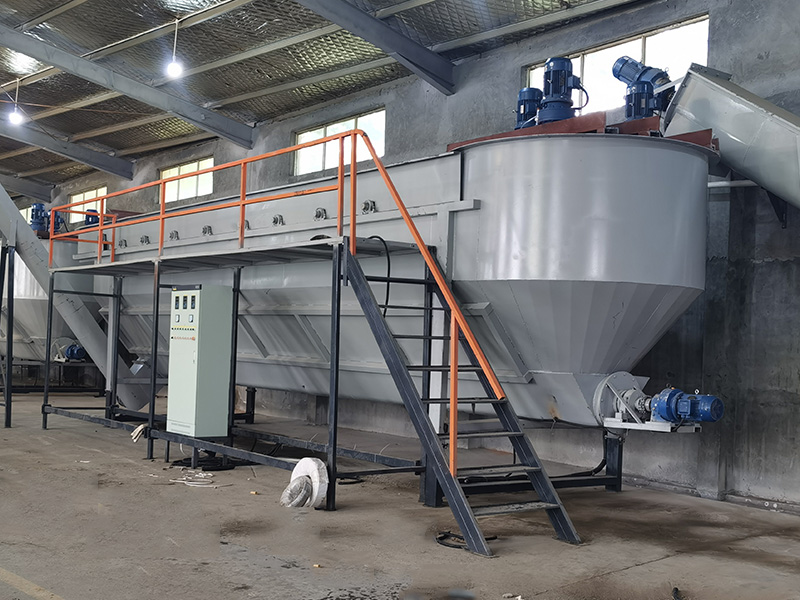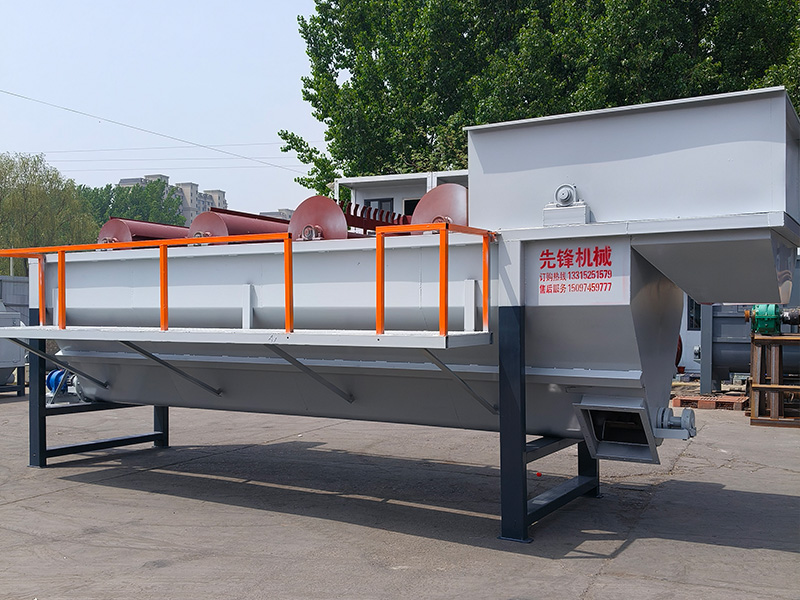Unlocking Efficiency: The Best Delabeling Machine for Your Production Needs
Unlocking Efficiency: The Best Delabeling Machine for Your Production Needs
Table of Contents
1. Introduction to Delabeling Machines
2. What is Delabeling and Why is it Important?
3. Types of Delabeling Machines
4. Key Features to Look for in a Delabeling Machine
5. Benefits of Using a Delabeling Machine
6. Choosing the Right Delabeling Machine for Your Needs
7. Mainte
Jun 01,2025

Unlocking Efficiency: The Best Delabeling Machine for Your Production Needs
Table of Contents
- 1. Introduction to Delabeling Machines
- 2. What is Delabeling and Why is it Important?
- 3. Types of Delabeling Machines
- 4. Key Features to Look for in a Delabeling Machine
- 5. Benefits of Using a Delabeling Machine
- 6. Choosing the Right Delabeling Machine for Your Needs
- 7. Maintenance Tips for Optimal Performance
- 8. Case Studies: Success Stories in Delabeling
- 9. Frequently Asked Questions
- 10. Conclusion
1. Introduction to Delabeling Machines
In today’s competitive manufacturing landscape, operational efficiency is paramount. One essential piece of equipment that significantly contributes to this efficiency is the **delabeling machine**. These machines play a critical role in the production process, particularly in industries dealing with packaging and recycling. Their primary function is to remove labels from products, allowing for seamless reprocessing or repackaging.
2. What is Delabeling and Why is it Important?
Delabeling is the process of removing labels from containers, bottles, and other packaging materials. This step is vital for companies focused on sustainability and recycling. Labels can often interfere with recycling processes, leading to contamination issues. By using a delabeling machine, manufacturers can ensure that their products meet recycling standards, promote environmental responsibility, and reduce waste.
Moreover, efficient delabeling is essential for companies wanting to repurpose containers for new products. By effectively removing labels without damaging the underlying packaging, manufacturers can enhance their operational efficiency and keep production costs low.
3. Types of Delabeling Machines
When considering a delabeling machine, it's important to understand the various types available on the market. Here’s a breakdown:
3.1. Manual Delabeling Machines
Manual delabeling machines are often less expensive and best suited for smaller operations or companies just starting with delabeling. These machines require an operator to load and unload products, making them less suitable for high-volume production.
3.2. Semi-Automatic Delabeling Machines
Semi-automatic machines strike a balance between manual and fully automatic systems. They streamline the delabeling process by reducing the amount of manual intervention required. Ideal for mid-sized operations, they increase efficiency while still being cost-effective.
3.3. Fully Automatic Delabeling Machines
For high-volume production, fully automatic delabeling machines are the best choice. They can process thousands of items per hour with minimal human intervention, making them essential for large-scale manufacturers. These machines often come equipped with advanced technology, allowing for quick changeovers and precision.
4. Key Features to Look for in a Delabeling Machine
When selecting a delabeling machine, consider these critical features:
4.1. Speed and Efficiency
Evaluate the machine’s throughput and ensure it meets your production requirements. The faster the machine can delabel, the more efficient your operations will be.
4.2. Versatility
A versatile machine can handle various types of labels and containers, increasing its utility. Look for machines capable of processing different sizes and materials.
4.3. Ease of Use
User-friendly controls and easy maintenance are vital. The more intuitive the machine, the easier it will be for your operators to maintain productivity.
4.4. Durability and Build Quality
Choose a delabeling machine made from high-quality materials to ensure longevity and reduce downtime due to repairs.
4.5. Safety Features
Safety should always be a priority. Look for machines that include safety guards and emergency stop functions to protect operators.
5. Benefits of Using a Delabeling Machine
Implementing a delabeling machine comes with numerous advantages, including:
5.1. Increased Operational Efficiency
Delabeling machines significantly speed up the process, allowing companies to handle larger volumes with less manual labor.
5.2. Cost Reduction
By reducing labor costs and increasing throughput, delabeling machines can lower overall production expenses.
5.3. Enhanced Recycling Efforts
Using a delabeling machine supports recycling initiatives, helping companies become more environmentally friendly and comply with regulations.
5.4. Improved Product Quality
By ensuring labels are removed cleanly and efficiently, delabeling machines help maintain the integrity and quality of the product underneath.
5.5. Customization Options
Many delabeling machines come with customizable settings, allowing manufacturers to adjust the machine to suit specific production needs.
6. Choosing the Right Delabeling Machine for Your Needs
Selecting the right delabeling machine involves assessing several factors:
6.1. Assess Your Production Volume
Determine how many items you need to process daily. This will help you decide between manual, semi-automatic, or fully automatic machines.
6.2. Consider Your Budget
Evaluate your budget and find a machine that meets your needs without compromising on quality.
6.3. Evaluate the Types of Labels Used
Different labels may require different approaches to removal. Ensure the machine you choose can handle the materials you frequently work with.
6.4. Seek Expert Guidance
Consult with suppliers or industry experts to gain insights on the best machine suited for your specific needs.
7. Maintenance Tips for Optimal Performance
To ensure your delabeling machine operates efficiently, follow these maintenance tips:
7.1. Regular Cleaning
Keep the machine clean to prevent buildup of adhesive residue and ensure smooth operation.
7.2. Routine Inspections
Conduct regular inspections to identify any signs of wear or malfunction early.
7.3. Lubrication
Ensure all moving parts are adequately lubricated to minimize friction and wear.
7.4. Professional Servicing
Schedule professional servicing annually to ensure the machine functions at peak performance.
8. Case Studies: Success Stories in Delabeling
Numerous companies have significantly benefited from integrating delabeling machines into their production lines. Below are a few notable examples:
8.1. Beverage Industry
A leading beverage manufacturer implemented a fully automatic delabeling machine, resulting in a 50% increase in efficiency and a substantial reduction in labor costs.
8.2. Consumer Goods
A consumer goods company that transitioned from manual to semi-automatic delabeling reported improved product quality and a 30% reduction in waste.
8.3. Sustainable Packaging
A sustainable packaging company used delabeling machines to ensure clean recycling streams, enhancing their brand’s eco-friendly image and compliance with environmental regulations.
9. Frequently Asked Questions
9.1. What types of labels can be removed with a delabeling machine?
Most delabeling machines can handle a variety of labels, including paper, plastic, and adhesive labels.
9.2. How often should I perform maintenance on my delabeling machine?
Regular maintenance should be performed based on usage, but a thorough inspection should be done at least once a month.
9.3. Can delabeling machines handle different bottle shapes?
Yes, many delabeling machines are designed with adjustable settings to accommodate various bottle shapes and sizes.
9.4. Are delabeling machines easy to operate?
Most modern delabeling machines are designed with user-friendly interfaces, making them easy to operate with minimal training.
9.5. What is the ROI on investing in a delabeling machine?
The ROI can vary based on production volume and efficiency improvements, but many companies see a return within the first year of use due to reduced labor costs and increased productivity.
10. Conclusion
Investing in a **delabeling machine** is a strategic decision that can unlock significant efficiency gains in your production process. By understanding the different types of machines available, their benefits, and how to maintain them, manufacturers can enhance their operations, reduce costs, and promote sustainability. With the right delabeling solution, companies can ensure they stay competitive in a rapidly evolving market while meeting the demands of both consumers and regulatory standards.
TAG:
Contact Us
E-mail :
Phone/WhatsApp:
Address:
Shunping, Baoding City, Hebei Province









